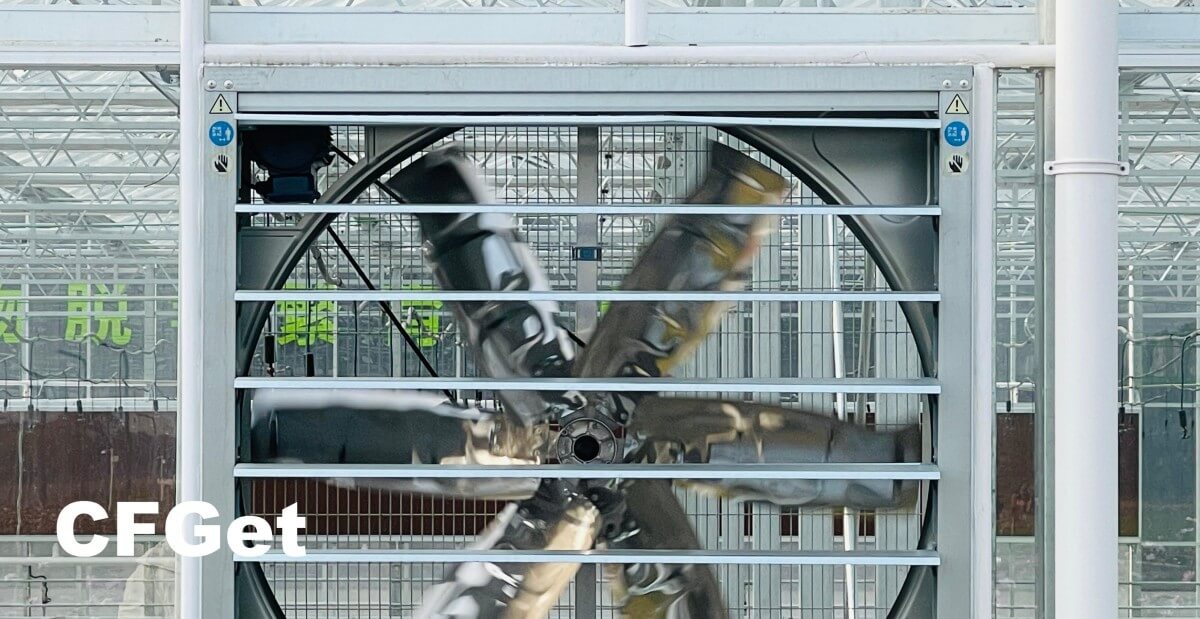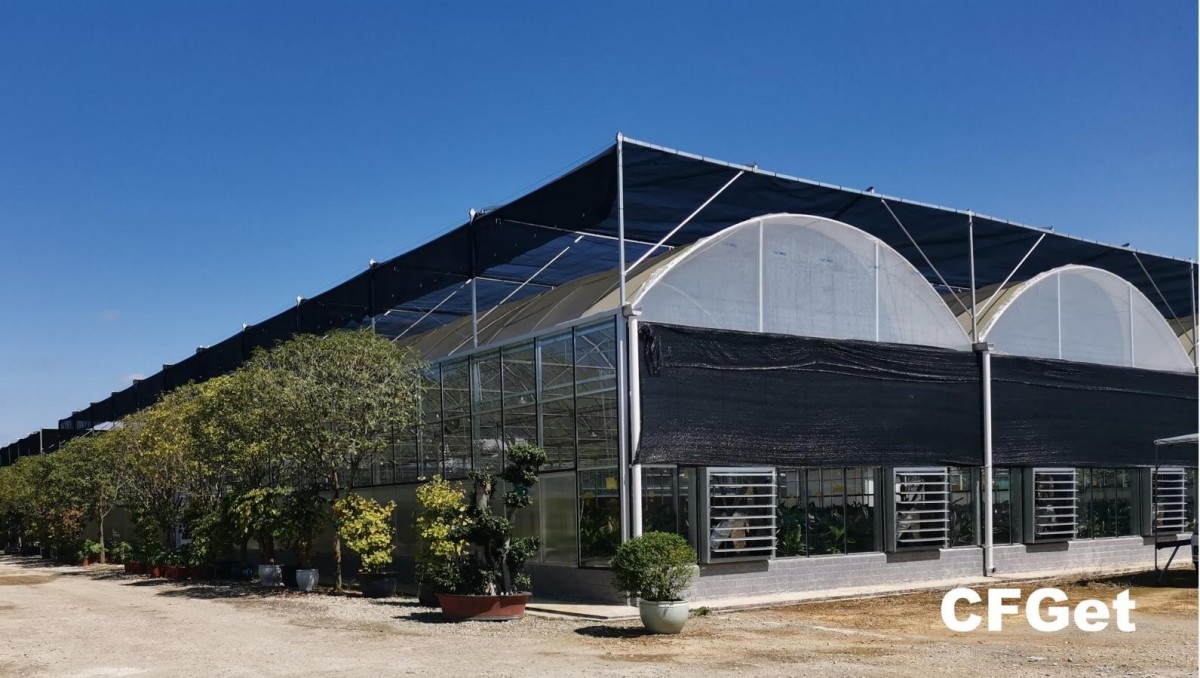Managing the temperature and humidity in a greenhouse is crucial for the healthy growth of plants, and an exhaust fan plays an essential role in achieving this. But how long should you run the exhaust fan in a greenhouse? The answer isn’t one-size-fits-all, as it depends on several factors, including the size of the greenhouse, the climate, and the type of plants you’re growing. In this article, we’ll explore how to determine the optimal running time for your exhaust fan and how to effectively use it to maintain the best environment for plant growth.
The Role of Exhaust Fans in a Greenhouse
The primary function of an exhaust fan is to expel hot, humid, and stale air from the greenhouse while drawing in fresh air through the intake vents. This helps regulate both temperature and humidity, creating an optimal environment for plants. Without effective ventilation, the internal conditions of the greenhouse can become unstable, leading to potential plant stress or even death.
For example, when the temperature inside the greenhouse rises too much, plants may experience heat stress, which limits their growth. The exhaust fan helps prevent this by keeping the air flowing, maintaining a stable temperature and humidity level inside.
Factors Affecting Exhaust Fan Running Time
The duration for which the exhaust fan should run depends on several factors. Let’s dive into each of these:
1.Temperature Control
One of the key functions of an exhaust fan is to regulate the temperature in the greenhouse. On sunny or warm days, the temperature inside a greenhouse can rise rapidly. Without cooling, this could cause heat stress, hindering plant growth. The exhaust fan helps to maintain a temperature range that is optimal for plant health—typically between 21°C (69°F) and 29°C (84°F).
How Long Should It Run?
When the temperature exceeds the desired range, you should run the exhaust fan continuously until the temperature stabilizes. The exact duration may vary from 15 minutes to an hour, depending on how quickly the temperature rises and the size of your greenhouse.
2.Humidity Control
Maintaining the right level of humidity is essential for plant health. High humidity can lead to poor air circulation and create a breeding ground for mold and pests. Exhaust fans help remove excess moisture from the air, improving airflow and lowering humidity levels to a range that’s optimal for most plants (around 50% to 70%).
How Long Should It Run?
If humidity levels are high, the exhaust fan should run long enough to expel the moisture and bring humidity back to the desired range. Depending on the external weather, you may need the fan to run for 30 to 60 minutes, especially in the mornings or evenings when humidity tends to be higher.
3.Size of the Greenhouse
The size of your greenhouse will directly affect how long the exhaust fan needs to run. A larger greenhouse requires more time to exchange the air completely, while a smaller one will need less time. The fan will need to run longer in a larger space to ensure adequate ventilation.
How Long Should It Run?
For a smaller greenhouse, the exhaust fan may only need to run for about 15 to 20 minutes. Larger greenhouses may require 30 to 45 minutes, depending on the airflow needed.
4.Type of Plants Being Grown
Different plants have different temperature and humidity preferences. For instance, tropical plants like bananas and peppers need higher humidity and warmer temperatures, while crops like lettuce and tomatoes prefer cooler, drier conditions. Depending on the type of plants you’re growing, you may need to adjust the fan’s running time.
How Long Should It Run?
For plants that require more moisture, such as tropical crops, the exhaust fan may need to run more frequently to maintain the right conditions. For plants that thrive in cooler temperatures, such as lettuce, the fan may need to run longer during hot weather.
Tips for Optimizing Exhaust Fan Usage
Here are a few tips to help you use your exhaust fan efficiently:
1.Use Temperature and Humidity Monitoring Tools
Invest in thermometers and hygrometers to monitor the temperature and humidity levels in real-time. With these instruments, you can adjust the fan’s operation more precisely. Many modern greenhouse systems also offer automated control that adjusts the fan based on preset temperature and humidity thresholds.
2.Install Automatic Vents
Along with exhaust fans, automatic roof vents can also help improve air circulation. This reduces the burden on the exhaust fan, ensuring that hot air escapes and cool, fresh air enters. Combining both systems can enhance overall ventilation efficiency.
3.Consider External Weather Factors
External weather conditions will also influence how long your fan needs to run. On cooler days, you may not need to run the fan as often, but on hotter or more humid days, you might need to run it longer to maintain a stable environment.
4.Use Intermittent Fan Operation
Instead of running the exhaust fan continuously, intermittent operation can often be more effective. You can set it to run for 15 to 30 minutes every hour, which will both save energy and ensure sufficient air exchange without overworking the fan.
In conclusion, the amount of time the exhaust fan should run in a greenhouse depends on various factors, such as temperature, humidity, greenhouse size, and the types of plants you are growing. By monitoring these factors regularly and adjusting the fan’s operation accordingly, you can maintain the best possible environment for plant growth. Efficient use of the exhaust fan will not only save energy but also improve the productivity of your greenhouse by ensuring the optimal conditions for your crops.
#GreenhouseVentilation #ExhaustFan #GreenhouseManagement #PlantHealth #GreenhouseTemperature #HumidityControl #SustainableAgriculture #EnergyEfficiency #GrowYourOwn #GreenhouseTips
Email: info@cfgreenhouse.com
Phone: +86 13550100793
Post time: Jan-10-2025








 Click to Chat
Click to Chat